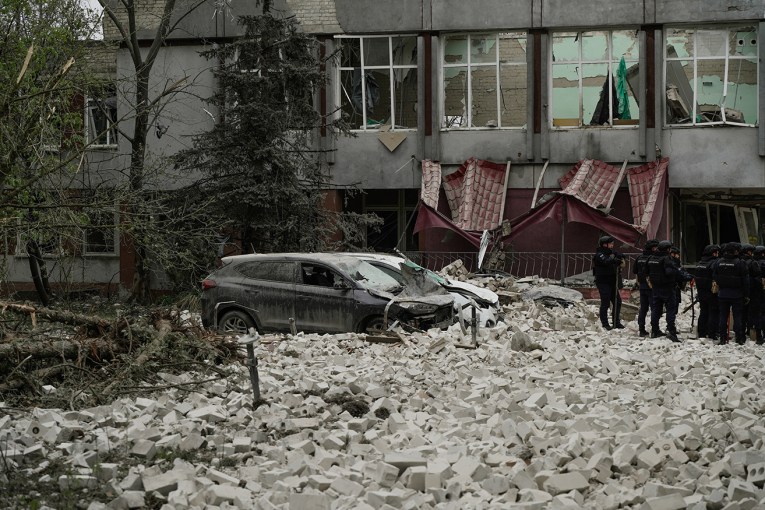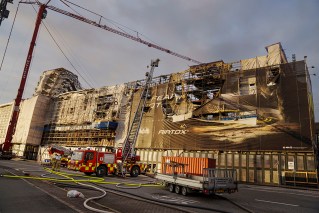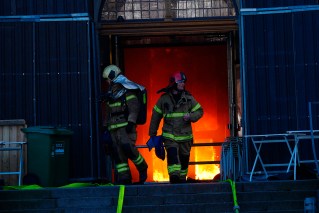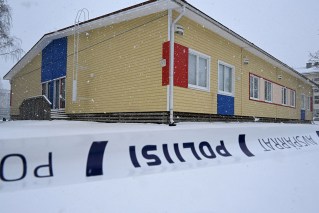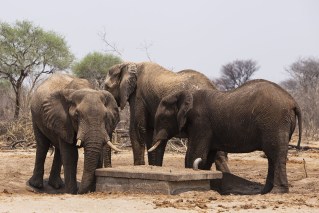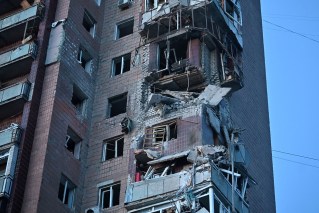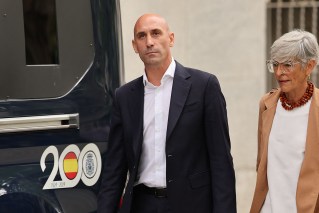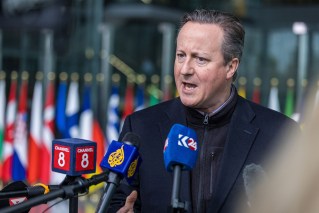Russia has taken over the largest nuclear power plant in Ukraine and Europe after fierce fighting near the facility sparked fears of a potential nuclear catastrophe.
Management of the Zaporizhzhia compound is said to be working at gunpoint after Russian military seized and occupied the site which supplies about one-fifth of Ukraine’s power.
Earlier a fire broke out in a building as Ukraine’s President Volodymr Zelenesky called on the world to “stop Russia before it becomes a nuclear disaster”, warning it could cause “six Chernobyls”.

Footage shows the power plant lit up by shelling. Photo: AAP
Video verified by Reuters showed a volley of incoming shells, before a large incandescent ball lit up the sky, exploding beside a car park and sending smoke billowing across the compound.
For now the plant appears to be operating “normally” but “there is of course no normalcy about this situation when there are military forces…in charge of the site,” said International Atomic Energy Agency (IAEA) Director General Rafael Grossi.
The US said it was “deeply concerned” about Russia’s intentions while a tweet from the US Embassy in Kyiv labelled the attack a “war crime”.
It is a war crime to attack a nuclear power plant. Putin's shelling of Europe's largest nuclear plant takes his reign of terror one step further. #TheHague #Zaporizhzhia #StandwithUkraine
— U.S. Embassy Kyiv (@USEmbassyKyiv) March 4, 2022
Mr Zelenesky accused Russia of intentionally firing on the nuclear site and warned of potential catastrophe.
“No country besides Russia has ever fired upon an atomic power plant’s reactors. The first time, the first time in history,” Mr Volodymyr Zelensky said in a Facebook post.
Russia’s defence ministry said the plant was working normally and insisted there had been no danger nor radiation leaks . It blamed the fire on a “monstrous attack” by Ukrainian saboteurs and said its forces were in control.
US Energy Secretary Jennifer Granholm and other Western officials said there was no indication of elevated radiation levels at the plant.
Russia slammed for ‘reckless’ attack
The United States and its allies have heavily criticised Russia at the United Nations over the shelling and seizure.
“The world narrowly averted a nuclear catastrophe last night,” Linda Thomas-Greenfield, US ambassador to the United Nations, told an emergency meeting of the 15-member Security Council, convened in response.
“Russia’s attack last night put Europe’s largest nuclear power plant at grave risk. It was incredibly reckless and dangerous. And it threatened the safety of civilians across Russia, Ukraine and Europe,” Thomas-Greenfield said.
Officials remained worried about the precarious circumstances, with Ukrainian staff operating under Russian control in battlefield conditions beyond the reach of administrators.
United Kingdom ambassador to the United Nations Barbara Woodward said: “It must not happen again. Even in the midst of an illegal invasion of Ukraine, Russia must keep fighting away from and protect the safety and security of nuclear sites.”
Growing toll
Thousands of people are believed to have been killed or wounded and more than one million refugees have fled Ukraine since February 24, when Russian President Vladimir Putin launched the biggest attack on a European state since World War Two.
Russian forces advancing from three directions have besieged Ukrainian cities and pounded them with artillery and air strikes.
Moscow says its aim is to disarm its neighbour and capture leaders it calls neo-Nazis. Ukraine and its Western allies call that a baseless pretext for a war to conquer the country of 44 million people.
Russia had already captured the defunct Chernobyl plant north of Kyiv, which spewed radioactive waste over much of Europe when it melted down in 1986. The Zaporizhzhia plant is a different and safer type.
Loud explosions could be heard in Kyiv on Friday morning and an air raid siren blared. Journalists in the capital were not immediately able to determine the cause of the blasts.
Only one Ukrainian city, the southern port of Kherson, has fallen to Russian forces since the invasion was launched on February 24, but Russian forces continue to surround and attack other cities.
The southeastern port city of Mariupol has been encircled by Russian forces and subjected to intense strikes, Britain said in an intelligence update on Friday.
The northeastern cities of Kharkiv and Chernihiv have been under attack since the start of the invasion, but defenders are holding out.
Kyiv, the capital of three million people, has been shelled but has so far been spared a major assault, with Russia’s main attack force stalled for days in a miles-long convoy on a highway to the north.
In Washington, a US defence official said Russians were still 25km from Kyiv city centre.
On Thursday, Russia and Ukraine negotiators agreed during peace talks on the need for humanitarian corridors to help civilians escape and to deliver medicines and food to areas of fighting.
In Russia itself, where Putin’s main opponents have largely been jailed or driven into exile over the past year, the war has been accompanied by a further crackdown on dissent.
Authorities have banned reports that refer to the “special military operation” as a “war” or “invasion”. Anti-war demonstrations have been quickly squelched with thousands of arrests.
-with AAP

